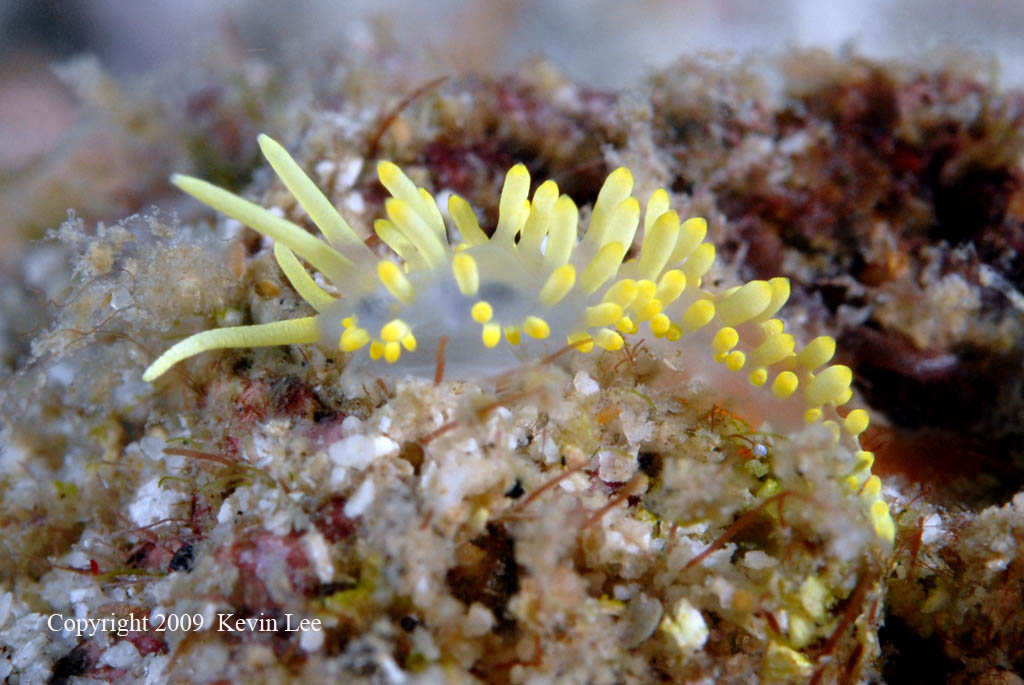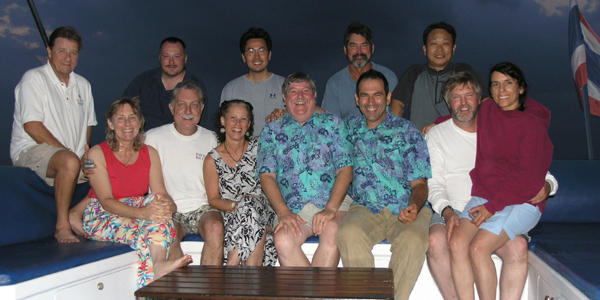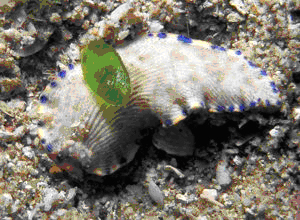 |
Piseinotecus sp.
Image courtesy of Kevin LeeMalaysia
Nikon D200, in a Sea & Sea housing, with dual YS-110 strobes
Kevin joined us on the Great Malaysian Branch Expedition back in October 2007. Twelve slug enthusiasts joined Terry Gosliner and me for 11 days on the liveaboard - Ocean Rover, diving waters off peninsular Malaysia, an area studied little. One of the seven undescribed species collected was this poorly known aeolid species. We openly admit, in Indo-Pacific Nudibranchs and Sea Slugs s that the systematic placement of this little gem remains uncertain and that further systematic study is needed. The clear body with white cerata tipped with yellow even fooled Kevin who at first thought this was Cuthona behrensi named after yours truly from Panama. Aside from the obvious difference in geographic occurrence, in Piseinotecus , you can see the black viscera through the transparent notum. Pisenotecus sp. is a small aeolid reaching about 12 mm in length.
It has been found in the western Pacific of Australia, Papua New Guinea, the Phillipines and even southern Japan
Gig Harbor, Washington
Aug., 2009
Back Row L-R: Jerry Allen, Jeff D., Kevin Lee, Jeff Holmes., Koh D.B.
Front Row L-R: Terry Schuller, David Behrens, Laura Losito., Terry Gosliner, Constantinos Petrinos, Bruce and Johanna Wight
 |
Malaysia Nudibranch Safari Huge Scientific SuccessDive boat Ocean Rover recently took a group of nudibranch experts on the First Malaysian Branch Expedition through the dive sites off the east coast of Peninsular Malaysia. Group leaders Dave Behrens and Dr. Terry Gosliner called the expedition a “huge scientific success”. Until recently Ocean Rover’s own nudibranch species list for the area -accumulated in four years diving Malaysia- totaled about 78 species. During the 8-day Nudibranch Safari a total of 153 species(!) were sighted, several of which are brand new with no proof of anyone having found these before. Among the new species were a fabulous Favorinus and a new Chromodoris. Aside from that, the group documented 24 species that have never been "named" meaning "described in a scientific journal". These are specimens from other locations besides Malaysia that the scientific community has not yet been able to name. All this is hugely exciting stuff for the scientific community and Ocean Rover's crewmembers, several of whom have discovered new Nudibranch species themselves, responded by raising their critter spotting skills to new levels. |
 |
Dive guide Kay thus spotted a brand new Dermatobranchus, (pictured) which Dr Terry Gosliner will add to his upcoming monograph on this group. Also found were several huge specimens of a new Phyllodesmium, which one of Dr Gosliner's students is presently describing. With this extra specimen she will be able to add DNA analysis as part of her description. It is safe to say that this first ever Ocean Rover nudibranch safari surpassed everyone's expectations and helps enforce Peninsular Malaysia's standing as a prime location for divers keen to expand their critter knowledge.
|

|
